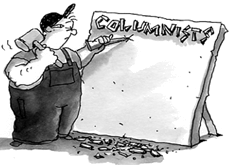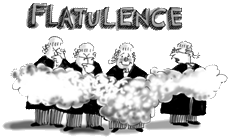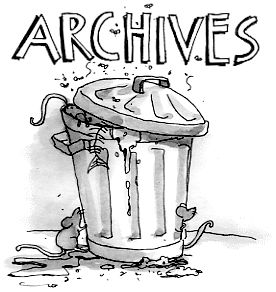Farr and wide
 Wendler on Wine •
Wendler on Wine •  Monday, August 1, 2011
Monday, August 1, 2011 Wine reviewer Gabriel Wendler traces the history of the grape in Geelong ... The rise and rise of Gary Farr ... Justinian's wine evaluation panel put their experienced barristerial noses into Farr's Chardonnay and Shiraz from 2007 & 2008
 Some years ago solicitor, vigneron and acclaimed wine writer John Beeston succinctly described Geelong as: "at once one of the oldest and youngest Australian wine regions."
Some years ago solicitor, vigneron and acclaimed wine writer John Beeston succinctly described Geelong as: "at once one of the oldest and youngest Australian wine regions."
The history of viticulture in the Geelong region is a fascinating one.
In 1839 Charles Joseph La Trobe was appointed superintendent of the Port Phillip settlement of New South Wales.
La Trobe was a polymath - evocatively described as: "a man with a thousand occupations".
Before arriving in Australia he had travelled widely in North America and Mexico. He also had spent time in the Swiss Canton of Neuchatel and he understood the value of viticulture.
La Trobe enthusiastically encouraged grape growers from Neuchatel to emigrate and pursue viticulture in what was ultimately to become the colony of Victoria.
So by 1845 wine was being made in the Geelong district by Swiss émigrés. Five years later Victoria came into being as a separate colony.
Following 30 years of wine production the district experienced the first outbreak in Australia of phylloxera vastatrix - a parasite that sucks nutrients from the root of the vine.
W.S. Benwell, in his valuable monograph "Journey to wine in Victoria" (Pitman 1960) reported:
"The Phylloxera Vastatrix was first found in Victoria by Mr Henry King in his vineyard at Geelong on November 8, 1877."
Encouraged by a colonial government bounty Geelong district grape growers eradicated their vine stocks.
Land previously used for grapes was turned over to animal husbandry. Almost a century would pass before viticulture was re-established in the Geelong district.
In 1966 veterinary surgeon Daryl Sefton pioneered a vineyard in the Moorabool Valley between Geelong and Ballarat. He named it Idyll - now known as Jindalee Estate.
The Geelong grape growing region is between 20-280 metres above sea level. Adjacent to Corio Bay and Bass Strait it has a cool dry maritime climate. Geelong, South Gippsland, and the Mornington Peninsula are the most southerly wine-making areas of Victoria.
By 1983 there were six established wineries around Geelong, and one of them was Bannockburn.
 Farr: wines of exceptional complexity and charmBetween 1973 and 1975 Bannockburn was planted to chardonnay, sauvignon blanc, pinot noir, merlot, cabernet sauvignon and shiraz.
Farr: wines of exceptional complexity and charmBetween 1973 and 1975 Bannockburn was planted to chardonnay, sauvignon blanc, pinot noir, merlot, cabernet sauvignon and shiraz.
Bannockburn's philosophy was not to release wine for sale until a minimum of 18 months bottle maturation.
James Halliday observed that by 1978 Gary Farr, Bannockburn's winemaker, was creating wines of "exceptional complexity and charm".
In 1980 Farr established Clyde Park wines.
He grew cabernet sauvignon, chardonnay and pinot noir and from these grapes he made wine at Bannockburn under the Clyde Park label.
In 1994 he sold Clyde Park and planted about five hectares of chardonnay, pinot noir, shiraz and viognier.
His first vintage was in 1999 and the wines carried simple, descriptive labels. He also remains convinced that natural cork is the only appropriate closure for bottled wine.
 Farr loves France. Over the last 30 years he has built upon his wine making knowledge and experience with episodic visits to the Cote de Nuits in Burgundy or Bourgogne.
Farr loves France. Over the last 30 years he has built upon his wine making knowledge and experience with episodic visits to the Cote de Nuits in Burgundy or Bourgogne.
Farr has participated in many vintages at Domaine Dujac situated in the commune of Morey - St-Denis.
This was partly due to the sensible policy of Domaine Dujac to invite winemakers from outside France to participate in a particular vintage.
In 1983 - a mediocre Burgundy vintage - Farr worked at Domaine Dujac with James Halliday.
Domaine Dujac - before 1967 known as Domaine Graillet - is a producer regarded highly by international wine critic Robert Parker Jr because it embraces traditional vinification techniques, such as no filtration or fining, and occasionally whole bunch fermentation.
Herbicides are not used and the vines are fertilised with organic manure.
Domaine Dujac is about 15 hectares in area and comprises a patchwork-quilt of small vineyards having multiple part owners. It also has a share in the famous Bonnes-Mares vineyard.
Robert Parker Jr has said:
"Burgundy is the world's most difficult wine region to understand as well as the most difficult wine to make."
It is no surprise wine critics claim wines made by Gary Farr, white and red, insinuate "Burgundian qualities".
In 2001 Farr was named Qantas/The Wine Magazine winemaker of the year.
The previous year he came second to Vanya Cullen of Cullen Wines, Western Australia. Having regard to the outstanding quality of her cabernet merlot blend in the years 1994-1998 she was, by any measure, a worthy winner.
In 2009 Farr was named Melbourne Food and Wine Festival Legend.
Farr's vinification philosophy can colloquially be described as no bullshit.
When asked: "What are the styles of wine you are trying to achieve"? he replied: "Something I'd like to drink."
In my opinion the wines constructed by Gary Farr since 1999, especially pinot noir and shiraz, are remarkable expressions of individuality, elegance, structure and rolling length.
Farr's son, Nick, who has had the benefit of his father's tutelage and ultimately created his own label Farr Rising, describes his attitude to winemaking as:
"Persistence, patience and passion. We are not driven by trends or fads rather we have a very clear and solid vision for our hand crafted range of artisan wines."
Justinian's wine evaluation panel comprising myself, Francis Douglas QC and Cameron Jackson last week tasted four wines made by Gary Farr: Chardonnay 2007 and 2008 and Shiraz 2007 and 2008. All under natural cork closure.
 Jackson, Wendler & Douglas - detecting butterscotch and bushfires
Jackson, Wendler & Douglas - detecting butterscotch and bushfires
Here is a summary of our tasting notes. Scores out of 100 points:
• Douglas noted the 2007 Chardonnay had strong oak vanilla overtones. Colour advanced for its age. An earlier maturing style drinking well now to 2015. He gave it 89 points. Wendler agreed with this assessment and also awarded the wine 89 points. Jackson said it was "a good wine writ small". He awarded it 90 points.
• We all thought the 2008 Chardonnay outstanding. Well structured. Corpulent mouth feel. Citrus and butterscotch overtones. Very impressive. Jackson rightly described it as having: "great drive through the mid-palate". Douglas and Wendler gave it 94 points, Jackson 95 - a gold medal wine.
• As for the 2007 Shiraz - Douglas noted smoky bacon and bushfire overtones. It's style reminded him of a Cote Rotie or Hermitage. Wendler noted molasses and chocolate - warmed by 14 percent alcohol. Jackson found a peek of tamarillo. We all wondered whether there was in fact some very minor addition of viognier (two percent?) hence the insinuation of Cote Rotie. We all arrived at 91 points.
• Finally the 2008 Shiraz combined with four percent viognier. Compared with the 2007 Shiraz we found it a much more generous wine in every way. We agreed it demonstrated well integrated fruit, soft silky tannins and a feu de joie finish. We thought the wine had a long and distinguished future. Wendler noted his preference for shiraz sans viognier. Nevertheless a delicious complex wine. Jackson thought French oak. Wendler gave it 92. Douglas 94, Jackson 95. A gold medal wine.
 Justinian's tasting panel nosing Gary Farr's Shiraz
Justinian's tasting panel nosing Gary Farr's Shiraz
Gabriel Wendler










Reader Comments